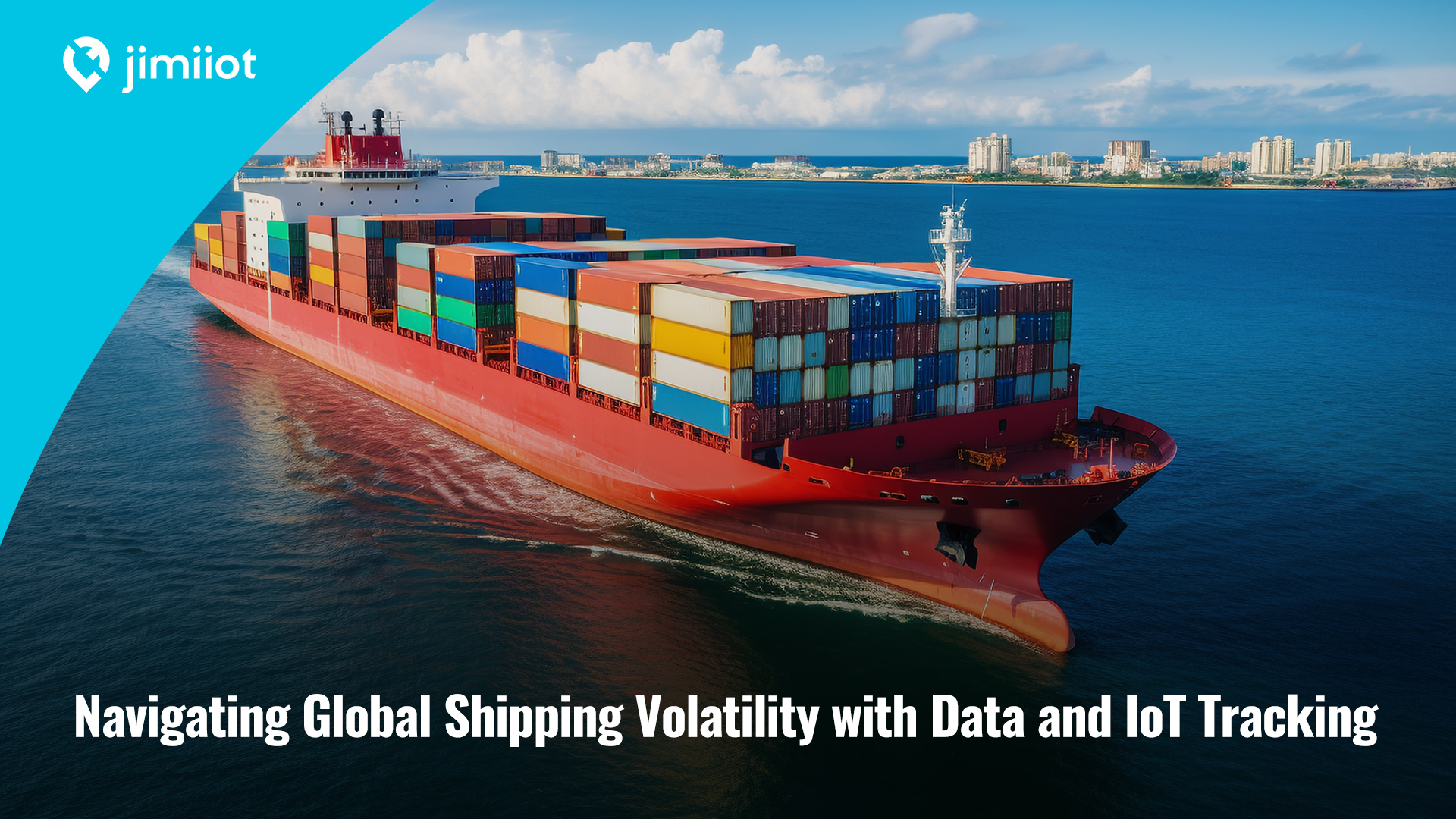Maritime transport is the backbone of world trade – over 80% of global goods by volume move by sea. Yet recent years have been marked by disruptions (pandemics, extreme weather, geopolitics, etc.) that pushed ocean schedule reliability to only about 50–55%. In practical terms, the average vessel arrival is now 5–6 days late compared to its ETA. These delays ripple through complex supply chains. When ships are late or off-schedule, shippers must carry extra inventory buffers (tying up capital) and scramble with expensive contingencies, eroding margins and customer confidence.

The costs of shipping delays are steep. Delays force companies to boost inventory levels – for example, aiming for 45 days of cover but often holding 10–15% more stock on hand to avoid stockouts. Industry analyses (McKinsey) show that poor visibility into freight can inflate inventory inaccuracies up to ~20% and increase working capital needs by roughly 15–30%. Buffering inventory also raises carrying costs and ties up cash. There are also downstream impacts: disrupted production schedules, premium freight (air or expedited cargo) to catch up, and even lost sales when goods miss critical sales windows.
In sum, unreliable shipping drives financial strain (extra costs, penalties, higher financing) and operational pain (line stoppages, rework) throughout the supply chain. For example, economic studies confirm that longer shipping times directly translate into higher prices and more stockouts – a net drag on efficiency and profitability. Reputationally, late deliveries undermine customer trust and market share when competitors offer more dependable service.
- Inventory and capital costs: Every day of delay typically translates into days (or weeks) of additional buffer inventory. If shippers target ~45 days of cover, a 5-day shipping delay requires roughly 10–15% more stock than planned. McKinsey data indicates low visibility can lead to ~20% inventory errors and up to 30% higher working-capital needs.
- Operational disruptions: Late shipments can halt production lines or assembly processes, forcing costly idle time or emergency sourcing. Companies then incur extra expenses (e.g. premium air freight) to restore flow.
- Lost sales and penalties: Missed delivery dates risk stockouts at retailers and lost seasonal sales. Contracts may include fines for tardy performance, and customers may shift to more reliable suppliers.
- Customer satisfaction and reputation: Inconsistent supply undermines service levels. Frequent delays damage a company’s reliability image, costing long-term loyalty and making margin recovery difficult.
To mitigate these risks, shippers are increasingly leaning on data-driven resilience. Performance data (from analysts like Sea-Intelligence) now drives carrier and route selection, favoring services with better on-time records. Importantly, real-time visibility via IoT tracking has become critical. Modern wireless trackers on containers, chassis, or equipment provide continuous location and status updates – turning unknown “blind spots” into actionable information. For example, sensors can report a container’s GPS position and environmental conditions (e.g. temperature, humidity) at frequent intervals. This transparency means disruptions are spotted early: a slow-moving vessel or container off-route can trigger alerts, allowing planners to reroute cargo or adjust inventory proactively. Studies note that IoT-enabled monitoring greatly enhances transparency and reduces the risk of lost or delayed cargo.
Industry forecasts underscore that tracker adoption is accelerating as shippers recognize these benefits. Connected asset-tracking devices are projected to surge from about 6.1 million in 2024 to 19.2 million by 2034. One survey even estimates around 25% of all containers will carry IoT sensors by 2026. In practice, this means an increasing share of cargo units will have built-in tracking. Such widespread deployment is expected to improve schedule performance and lower waste – analysts point out that more monitoring could cut roughly $400 billion in annual food wastage by preventing spoilage of perishables in transit.
Key strategies to build resilience include:
- Data-driven partner selection: Use performance metrics and analytics (e.g. carriers’ schedule reliability scores) to choose the most dependable services. For instance, Sea‑Intelligence reports allow shippers to compare carrier on-time percentages before committing volumes.
- Real-time IoT asset tracking: Equip containers and high-value equipment with wireless trackers to gain continuous visibility. This multi-system tracking (GPS, cellular base stations, BLE beacons, etc.) means a cargo’s exact position and status are always known. In practice, a single dashboard can now show location and ETA of each shipment globally, turning shipping into a transparent, predictable process.
- Cargo condition monitoring: For sensitive goods, trackers with built-in sensors provide data on temperature, humidity or shock. Any deviation (e.g. a reefer container warming) triggers instant alerts, letting managers take preventive action rather than discovering spoilage on delivery.
- Diversified routing and mode choices: To avoid single points of failure, shipments can be split across different carriers, ports, or modes (rail/air/road) as needed. Doing so means that a delay in one part of the network won’t halt the entire chain.
- Robust contingency planning and tech integration: Maintain alternative plans for high-risk routes (seasonal backups, extra buffer stock at transit hubs, etc.). Investing in integrated logistics platforms helps, too – platforms that consolidate tracking data from multiple sources ensure the supply chain team has a unified, reliable view.
By transforming uncertainties into data, these measures contain the cost of delays. Tracking technology, in particular, closes the visibility gap. As one IoT logistics review explains, continuous asset monitoring “ensures transparency and reduces the risk of lost or delayed cargo”. In short, end-to-end visibility lets shippers act before delays propagate.
JimiIoT’s LL705: A Resilient 4G Asset Tracker. To bring these strategies to life, JIMIIoT offers advanced tracking hardware built for harsh maritime operations. The LL705 is a rugged 4G wireless GPS tracker designed for high-value ocean cargo (e.g. containers, chassis, offshore equipment). Key features include:
- LTE Cat-1 Connectivity (4G + 2G fallback): Ensures stable global wireless coverage, with worldwide roaming to keep trackers online even in remote ports or along coastlines.
- Multi-System Positioning: Combines GPS and BeiDou satellite fixes with cellular tower location and Bluetooth options to yield precise location on JIMIIoT’s cloud platform. This multi-modal approach maximizes coverage and accuracy.
- Ultra-Long Battery Life: An 18,000 mAh internal battery can power the LL705 for up to 10 years on energy-saving settings. This longevity is ideal for assets that move infrequently or are hard to service, eliminating frequent battery replacements.
- Rugged IP67 Housing: Built dust-tight and waterproof, the device withstands salt spray, extreme weather or washdowns. Even in the harshest marine environments it maintains reliable operation.
- Security Alerts: Built-in tamper detection (via a light sensor) sends an alert if the device is moved or uncovered. A low-battery alert also warns before power runs critically low.
- Flexible Mounting: The LL705 can be installed using screws, or via optional magnets, strong 3M adhesive, or cable ties – adapting to any container or asset surface.
- Configurable Modes: Working modes and update frequencies can be adjusted remotely, balancing reporting needs against power usage for different operational scenarios.
In practice, deploying LL705 trackers on containers and port equipment gives JIMIIoT customers real-time, end-to-end visibility of their cargo. These devices turn the unpredictable ocean journey into a data-driven process: every shipment’s location and condition is monitored continuously, letting logistics teams proactively reroute, reschedule or reallocate inventory as needed.
In an era of mounting shipping uncertainty, data and IoT visibility are no longer optional – they are essential. JIMIIoT’s solutions, exemplified by the LL705, help shippers lock in that visibility. With persistent tracking and analysis, ocean freight becomes more predictable and resilient, safeguarding supply chains against the high costs of unreliability.
Why JimiIoT
JimiIoT is a global leader in innovative IoT solutions. We provide cutting-edge hardware and software tailored to enhance efficiency and connectivity. Our range of products includes advanced GPS tracking devices, asset management solutions, smart vehicle dashcams, and telematics platforms. With a focus on technological excellence and customer satisfaction, we empower businesses to optimize operations and gain valuable insights from data-driven analytics. Trust JimiIoT to drive positive change and unlock growth opportunities in the digital age.
If you would like more details, please visit Facebook, LinkedIn, INS, and Twitter pages for further information.
